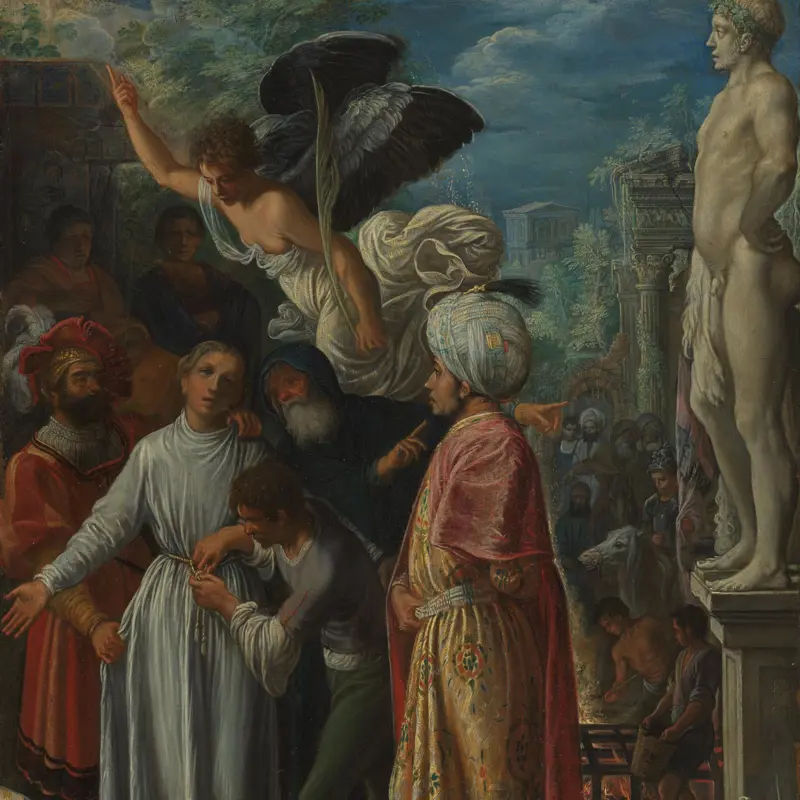After Adam Elsheimer, 'Tobias and the Archangel Raphael', second half of the 17th century
About the work
Overview
This scene comes from the apocryphal Book of Tobit. Old and blind, Tobit had sent his son Tobias on a long journey to collect a debt on his behalf. Here, Tobias drags an enormous fish across the ground. He is watched closely by the Archangel Raphael, who had instructed the boy to catch a fish, the organs of which could be used to restore Tobit’s sight.
The picture is a copy after an original by Elsheimer known as the ‘The Large Tobias’ (there is a small version by the artist in Frankfurt) and was probably made in the mid-seventeenth century. The large tree on the right has been identified as a eucalyptus, which at the time only grew in its native Australia. Its inclusion here may be explained by Adam Elsheimer’s friendship with the botanist Dr Johann Faber, who, like Elsheimer, was living in Rome when the original version of the picture was made. Faber may have been the painting’s patron, or just provided its botanical references.
Key facts
Details
- Full title
- Tobias and the Archangel Raphael returning with the Fish
- Artist
- After Adam Elsheimer
- Artist dates
- 1578 - 1610
- Date made
- second half of the 17th century
- Medium and support
- oil on copper
- Dimensions
- 19.3 × 27.6 cm
- Acquisition credit
- Bequeathed by Samuel Sanders, 1894
- Inventory number
- NG1424
- Location
- Room 27
- Collection
- Main Collection
- Previous owners
- Frame
- 21st-century Replica Frame
Provenance
Additional information
Text extracted from the ‘Provenance’ section of the catalogue entry in Susan Foister, ‘National Gallery Catalogues: The German Paintings before 1800’, London 2024; for further information, see the full catalogue entry.
Bibliography
-
1959Levey, Michael, National Gallery Catalogues: The German Schools, London 1959
-
2001
C. Baker and T. Henry, The National Gallery: Complete Illustrated Catalogue, London 2001
-
2024S. Foister, National Gallery Catalogues: The German Paintings before 1800, 2 vols, London 2024
About this record
If you know more about this work or have spotted an error, please contact us. Please note that exhibition histories are listed from 2009 onwards. Bibliographies may not be complete; more comprehensive information is available in the National Gallery Library.



